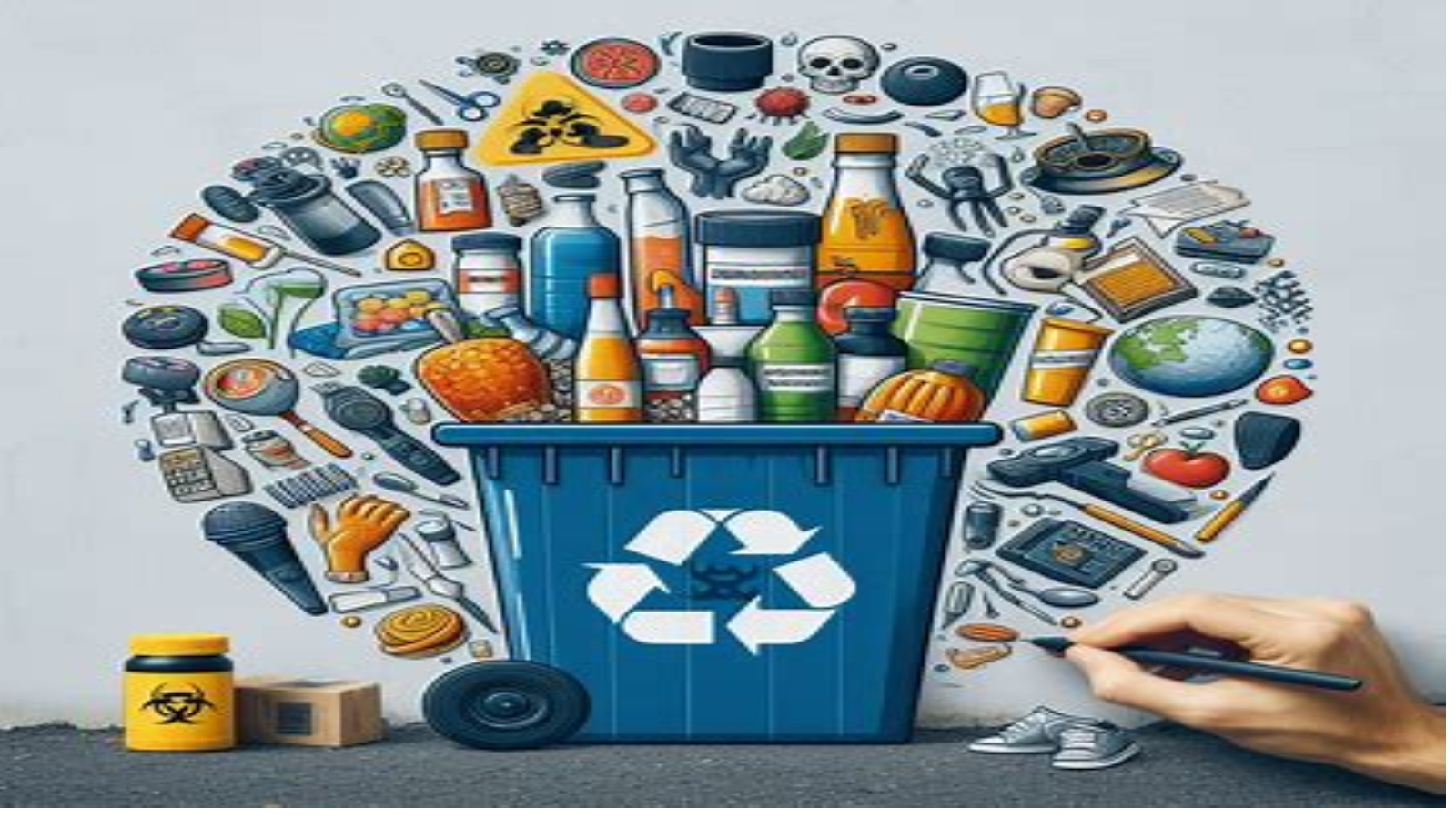1. Importance of Quality Control in Pharmaceuticals
1.1 Ensuring Patient Safety
Quality control ensures that medications are free from contaminants, contain the correct ingredients, and meet the required potency levels to safeguard patient health.
1.2 Regulatory Compliance
Pharmaceutical products must adhere to strict regulatory standards set by organizations such as the FDA, EMA, and WHO. Quality control helps manufacturers meet these requirements and avoid penalties.
1.3 Brand Reputation and Market Trust
Consistent quality enhances a company’s reputation and trust among healthcare providers and patients. Poor-quality products can result in recalls, lawsuits, and damage to the company’s image.
2. Techniques in Quality Control
2.1 Analytical Testing
Analytical testing is a cornerstone of QC in pharmaceuticals. Techniques include:
- High-Performance Liquid Chromatography (HPLC): Used to analyze the purity, potency, and stability of drug compounds.
- Gas Chromatography (GC): Ideal for testing volatile substances and residual solvents.
- Mass Spectrometry (MS): Identifies and quantifies complex molecules.
2.2 Microbiological Testing
Ensures that pharmaceutical products are free from harmful microorganisms:
- Sterility Testing: Verifies that products like injectables are sterile.
- Endotoxin Testing: Detects harmful bacterial endotoxins.
- Microbial Limit Testing: Ensures compliance with allowable microbial limits in non-sterile products.
2.3 Physical and Chemical Testing
Examines the physical and chemical attributes of drug products:
- Dissolution Testing: Measures the rate and extent of drug release.
- Disintegration Testing: Ensures tablets and capsules break down appropriately for absorption.
- pH Testing: Verifies the acidity or alkalinity of liquid formulations.
2.4 Stability Testing
Stability testing evaluates how environmental factors like temperature, humidity, and light affect a drug’s quality over time. This ensures the product remains effective throughout its shelf life.
2.5 Validation and Calibration
- Process Validation: Confirms that manufacturing processes consistently produce products meeting quality standards.
- Equipment Calibration: Ensures that machinery used in manufacturing and testing delivers accurate results.
3. Best Practices in Quality Control
3.1. Establishing a Strong Quality Management System (QMS)
3.1.1 Comprehensive Documentation
- Maintain detailed and accurate records of all QC activities, including test results, batch records, and audits.
- Implement electronic documentation systems for improved traceability and ease of access.
3.1.2 Standard Operating Procedures (SOPs)
- Develop clear and concise SOPs for all QC processes to ensure uniformity and compliance.
- Regularly update SOPs to reflect changes in regulatory requirements or advancements in technology.
3.1.3 Regular Audits and Inspections
- Conduct internal and external audits to identify gaps in QC processes.
- Implement corrective and preventive actions (CAPA) based on audit findings.
3.2. Adherence to Good Manufacturing Practices (GMP)
3.2.1 Facility Hygiene and Environmental Controls
- Maintain clean and sanitized facilities to prevent contamination.
- Monitor environmental conditions such as temperature, humidity, and air quality in manufacturing and QC areas.
3.2.2 Equipment and Personnel
- Ensure that all equipment used in QC is properly calibrated and maintained.
- Train personnel in GMP, QC processes, and the correct handling of materials and equipment.
3.2.3 Batch and Process Controls
- Implement stringent in-process controls to detect deviations during manufacturing.
- Use statistical process control (SPC) to monitor process performance and ensure consistency.
3.3. Integration of Advanced Technologies
3.3.1 Automation in Quality Testing
- Leverage automated systems to perform routine QC tasks, reducing human error and increasing efficiency.
- Use robotics for sampling, analysis, and documentation to streamline operations.
3.3.2 Digitalization and Data Integrity
- Adopt electronic systems for data recording and analysis, ensuring accuracy and integrity.
- Use secure platforms to protect sensitive QC data from breaches or tampering.
3.3.3 Advanced Analytical Tools
- Employ techniques like high-performance liquid chromatography (HPLC), gas chromatography (GC), and mass spectrometry for precise quality analysis.
- Utilize real-time monitoring systems to detect issues promptly and reduce delays in product release.
3.4. Continuous Training and Development
3.4.1 Regular Training Programs
- Provide ongoing training to QC personnel on new technologies, updated regulations, and best practices.
- Conduct refresher courses to reinforce GMP and quality standards.
3.4.2 Skill Assessment
- Evaluate employees’ skills periodically to identify training needs.
- Offer certifications and advanced training opportunities to enhance expertise.
3.5. Risk Management and Proactive Problem-Solving
3.5.1 Risk Assessment
- Identify potential risks in manufacturing and QC processes through systematic analysis.
- Use tools like Failure Mode and Effects Analysis (FMEA) to predict and mitigate risks.
3.5.2 Implementation of Corrective and Preventive Actions (CAPA)
- Address quality issues immediately with effective CAPA plans.
- Analyze root causes of deviations to prevent recurrence.
3.5.3 Quality by Design (QbD)
- Adopt QbD principles to design processes that inherently ensure product quality.
- Use process analytical technology (PAT) to monitor critical quality attributes (CQAs) in real time.
3.6. Focus on Regulatory Compliance
3.6.1 Staying Updated on Regulatory Changes
- Monitor updates from regulatory bodies such as the FDA, EMA, and WHO.
- Modify QC practices to align with new regulations and standards.
3.6.2 Regular Interaction with Regulatory Agencies
- Engage in open communication with regulatory authorities to understand expectations.
- Participate in workshops and training sessions offered by regulators.
3.7. Emphasis on Product Stability and Shelf Life
3.7.1 Comprehensive Stability Testing
- Conduct long-term and accelerated stability tests to evaluate product behavior under various conditions.
- Ensure that products retain their quality and efficacy throughout their shelf life.
3.7.2 Storage and Transportation Controls
- Maintain proper storage conditions to preserve product integrity.
- Monitor temperature and humidity during transportation to avoid degradation.
3.8. Continuous Improvement Through Feedback
3.8.1 Customer and Patient Feedback
- Collect feedback from patients and healthcare providers to identify areas for improvement.
- Address complaints promptly and use the insights to refine QC processes.
3.8.2 Lean and Six Sigma Methodologies
- Apply Lean principles to eliminate waste in QC processes.
- Use Six Sigma techniques to enhance process efficiency and reduce variability.
3.9. Promoting a Culture of Quality
3.9.1 Quality as a Core Value
- Encourage all employees, from leadership to operators, to prioritize quality in their roles.
- Reward and recognize teams that demonstrate exceptional quality practices.
3.9.2 Cross-Functional Collaboration
- Foster collaboration between QC, manufacturing, R&D, and regulatory teams to ensure seamless operations.
- Share insights and best practices across departments to improve overall quality standards.
4. Challenges in Quality Control
4.1. Regulatory Challenges
4.1.1 Evolving Regulatory Standards
Pharmaceutical manufacturers must constantly adapt to changes in regulations from global agencies like the FDA, EMA, and WHO. The frequent updates in guidelines can create compliance gaps if not implemented promptly.
4.1.2 Varied Global Requirements
Different countries have unique regulatory requirements, making it challenging for companies to maintain uniform QC practices across multiple markets.
4.1.3 Cost of Non-Compliance
Failure to comply with regulations can result in hefty fines, product recalls, and damage to a company’s reputation. Meeting these standards often requires substantial investment in training, equipment, and process upgrades.
4.2. Technological Challenges
4.2.1 Integration of Advanced Technologies
The adoption of advanced QC technologies like automation, artificial intelligence (AI), and real-time monitoring systems can be costly and require specialized expertise. Smaller manufacturers may struggle to afford these investments.
4.2.2 Data Management and Integrity
With the rise of digital systems in QC, ensuring data integrity has become a major concern. Issues like unauthorized data access, system errors, or non-compliance with ALCOA (Attributable, Legible, Contemporaneous, Original, Accurate) principles can compromise QC processes.
4.2.3 Equipment Calibration and Maintenance
Ensuring that testing equipment is regularly calibrated and maintained to deliver accurate results can be resource-intensive, particularly in facilities with a large number of instruments.
4.3. Resource Constraints
4.3.1 Skilled Workforce Shortages
The pharmaceutical industry faces a shortage of trained QC professionals, which can lead to delays, errors, or inconsistencies in quality testing.
4.3.2 High Operational Costs
Maintaining QC labs, advanced testing equipment, and adhering to rigorous testing protocols often requires significant financial investment, which can be challenging for smaller companies or startups.
4.3.3 Time Constraints
Tight production schedules can put pressure on QC teams, leading to rushed testing processes that increase the likelihood of errors or oversight.
4.4. Manufacturing Complexities
4.4.1 Variability in Raw Materials
Inconsistent quality of raw materials can pose significant challenges in achieving uniformity and compliance in finished products. This requires stringent raw material testing and supplier management.
4.4.2 Global Supply Chain Issues
With the increasing globalization of supply chains, companies must ensure the quality of materials sourced from multiple suppliers worldwide. Delays, contamination risks, or lack of traceability can disrupt QC processes.
4.4.3 Cross-Contamination Risks
In multi-product manufacturing facilities, cross-contamination is a major concern. Robust cleaning and validation processes are needed to prevent quality issues, but these can be time-consuming and expensive.
4.5. Microbial and Environmental Challenges
4.5.1 Sterility Maintenance
Ensuring sterility in products such as injectables or ophthalmic solutions is critical. Any lapse in aseptic conditions during manufacturing can lead to contamination and product recalls.
4.5.2 Environmental Monitoring
Maintaining controlled environmental conditions, such as temperature, humidity, and air quality, is challenging in large manufacturing facilities. Deviations can impact product quality, especially for sensitive formulations.
4.5.3 Detection of Microbial Contaminants
Traditional microbiological testing methods are time-consuming and may not detect all contaminants. The shift to rapid microbiological methods (RMM) requires investments in new technologies and training.
4.6. Product-Specific Challenges
4.6.1 Complexity of Biologics
Biological products such as vaccines and monoclonal antibodies present unique QC challenges due to their complex structures, susceptibility to environmental factors, and need for advanced analytical techniques.
4.6.2 Generic Drug Testing
For generic drugs, manufacturers must ensure that products are bioequivalent to the innovator drugs, requiring additional testing and documentation.
4.6.3 Stability Issues
Stability testing for new formulations can be time-intensive and may delay product launches. Factors like light sensitivity, heat, and humidity add complexity to stability studies.
4.7. Risk Management Challenges
4.7.1 Identifying Potential Risks
Comprehensive risk assessment is required to identify vulnerabilities in QC processes. However, identifying all potential risks across complex systems can be difficult.
4.7.2 Implementing CAPA
While Corrective and Preventive Actions (CAPA) are essential for addressing quality issues, implementing them effectively requires a thorough understanding of root causes, which can be time-consuming and challenging.
4.7.3 Handling Recalls
If a quality defect is identified post-distribution, recalls must be conducted promptly. Managing recalls efficiently while minimizing the impact on company operations and reputation is a significant challenge.
4.8. Future Challenges in Quality Control
4.8.1 Real-Time Release Testing (RTRT) Implementation
RTRT promises faster product release by analyzing quality during manufacturing. However, adopting RTRT requires significant technological upgrades and changes in traditional QC workflows.
4.8.2 Sustainability and Green Initiatives
The industry is under increasing pressure to adopt environmentally friendly practices, including waste reduction in QC processes. Transitioning to sustainable practices may require re-evaluating existing systems.
4.8.3 Rising Complexity of Regulations
As new therapeutic modalities emerge (e.g., gene and cell therapies), regulations are becoming more complex, presenting additional challenges for QC teams.
5. Future Trends in Quality Control
5.1. Digital Transformation in Quality Control
5.1.1 Automation and Robotics
Automation is transforming QC processes by streamlining repetitive tasks and reducing human error. Robotics is increasingly being used for sampling, testing, and data management, ensuring greater precision and speed.
- Automated Testing Systems: Rapid testing for parameters like dissolution, potency, and microbial load is becoming more efficient with automated systems.
- Sample Handling Robots: Robots are minimizing cross-contamination risks and enhancing accuracy in sample preparation.
5.1.2 Artificial Intelligence (AI) and Machine Learning (ML)
AI and ML are being integrated into QC to predict outcomes, optimize processes, and identify anomalies.
- Predictive Analytics: AI can predict deviations in manufacturing processes, enabling proactive adjustments.
- Data Analysis: ML algorithms can process vast amounts of QC data, identifying trends and areas for improvement.
5.1.3 Blockchain for Data Integrity
Blockchain technology is being adopted to ensure data integrity and traceability in QC. Immutable records provide a transparent audit trail, enhancing compliance with regulatory standards.
5.2. Advanced Analytical Techniques
5.2.1 Real-Time Release Testing (RTRT)
RTRT is gaining prominence as a method to analyze product quality during manufacturing rather than after production.
- Process Analytical Technology (PAT): Enables real-time monitoring of critical quality attributes (CQAs).
- Benefits of RTRT: Reduces batch release times and improves overall manufacturing efficiency.
5.2.2 Rapid Microbiological Methods (RMM)
Traditional microbiological tests are being replaced by rapid methods that provide faster and more accurate results.
- Fluorescence-Based Detection: Identifies microbial contamination in hours rather than days.
- Molecular Techniques: PCR and next-generation sequencing (NGS) are being used for precise microbial identification.
5.2.3 Nanotechnology in Quality Testing
Nanotechnology is revolutionizing QC by enabling highly sensitive detection of impurities and contaminants.
- Nanoparticle Sensors: Detect trace amounts of chemical or biological contaminants.
- Enhanced Drug Characterization: Provides better insight into drug particle size, stability, and distribution.
5.3. Integration of Artificial Intelligence and Digital Twins
5.3.1 AI-Driven Quality Prediction
AI can predict product quality based on historical data, reducing the need for extensive post-production testing.
- Error Detection: AI can identify inconsistencies in manufacturing processes before they affect product quality.
- Optimization: AI models can recommend process adjustments in real-time to maintain quality standards.
5.3.2 Digital Twins in QC
Digital twin technology creates virtual replicas of manufacturing processes or products.
- Simulations for Quality Improvement: Allows testing of different scenarios to optimize QC processes.
- Predictive Maintenance: Helps identify potential equipment failures that could affect QC.
5.4. Personalized Medicine and QC
5.4.1 QC for Biologics and Gene Therapies
With the rise of biologics, gene therapies, and personalized medicine, QC processes are becoming more specialized.
- Advanced Analytical Techniques: Used to assess complex biologic products.
- Custom QC Protocols: Tailored QC strategies for individual patient-specific treatments.
5.4.2 Quality Testing for mRNA Therapies
mRNA vaccines and therapies have unique QC requirements.
- Purity and Integrity Testing: Ensuring the stability and efficacy of mRNA products.
- Lipid Nanoparticle Characterization: Critical for delivery system quality.
5.5. Sustainability in Quality Control
5.5.1 Green Chemistry and Testing
Pharmaceutical companies are focusing on sustainable practices in QC to reduce environmental impact.
- Eco-Friendly Testing Methods: Minimize the use of hazardous chemicals in quality testing.
- Waste Reduction: Employing lean practices to reduce resource wastage during QC.
5.5.2 Energy-Efficient Labs
QC labs are adopting energy-efficient equipment and renewable energy sources to align with sustainability goals.
5.6. Enhanced Focus on Regulatory Compliance
5.6.1 Harmonization of Global Standards
Efforts are underway to harmonize global regulatory standards, making it easier for manufacturers to meet QC requirements across different markets.
- ICH Guidelines: Focused on aligning quality standards globally.
- Collaborative Initiatives: Regulatory bodies are working together to streamline compliance processes.
5.6.2 Quality by Design (QbD) Implementation
QbD principles are being increasingly integrated into QC processes.
- Risk-Based Approaches: Identifying and mitigating risks during manufacturing and testing.
- Enhanced Process Understanding: Using advanced tools to ensure consistent product quality.
5.7. Training and Development of QC Professionals
5.7.1 Upskilling in Advanced Technologies
QC teams are being trained in AI, data analytics, and advanced analytical tools to stay updated with technological advancements.
5.7.2 Collaborative Learning Platforms
Companies are leveraging digital platforms to provide ongoing training and certification programs for QC professionals.
5.8. Collaborative Quality Control Systems
5.8.1 Cloud-Based QC Platforms
Cloud technology enables real-time collaboration between different teams and locations.
- Centralized Data Access: Ensures QC data is accessible to stakeholders worldwide.
- Improved Communication: Facilitates seamless collaboration between manufacturing, QC, and regulatory teams.
5.8.2 Cross-Functional Integration
QC is increasingly integrated with other functions such as R&D and manufacturing for a holistic approach to quality assurance.
6. Conclusion
Quality control is indispensable for pharmaceutical manufacturing, ensuring the safety, efficacy, and reliability of medications. By adopting advanced techniques, adhering to GMP, and focusing on continuous improvement, pharmaceutical companies can maintain high-quality standards and meet regulatory expectations. Implementing these best practices not only protects patients but also strengthens the manufacturer’s position in a competitive market.
For more articles, Kindly Click here.
For pharmaceutical jobs, follow us on LinkedIn
For Editable SOPs in Word format contact us on info@pharmaceuticalcarrier.com
For more information kindly follow us on www.pharmaguidelines.co.uk










